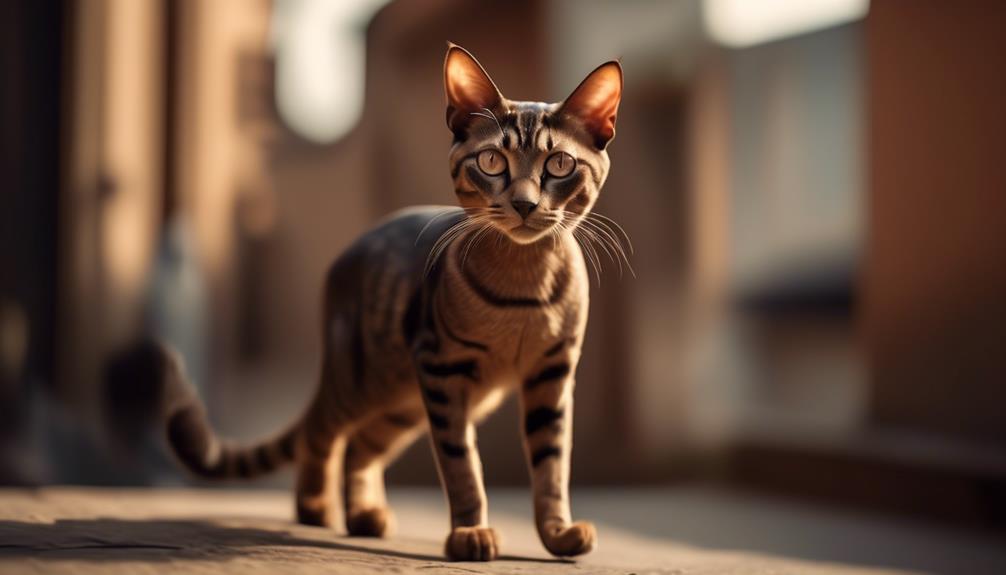
Welcome to the captivating world of Raas cats, a breed from the enchanting Raas Island in Indonesia.
With their medium to large size and sleek, dense coats in various striking colors and patterns, Raas cats are a sight to behold.
But their beauty is not the only thing that sets them apart.
These intelligent and playful felines are strong-willed and independent, making them intriguing companions.
In this discussion, we will explore the unique characteristics and information about Raas cats, shedding light on their origin, temperament, exercise needs, and much more.
So, let’s embark on this journey together and unravel the mysteries of the remarkable Raas cat breed.
Key Takeaways
- Raas cats have medium to large sizes and short, dense, sleek coats with various colors and patterns.
- They are intelligent, playful, energetic, and strong-willed, but also independent and affectionate with their family once comfortable.
- Raas cats require high exercise needs and experienced owners due to their independent nature. They also need patience during training and weekly brushing for grooming.
- Raas cats are generally healthy, but there is a potential for genetic health conditions. Regular wellness visits with a vet are essential, and a care routine should be developed to keep the cat healthy.
Origin and Size
The Raas cat, originating from the Indonesian Raas Island, is a medium to large-sized breed known for its distinct characteristics.
These cats are part of the domestic shorthair breed group and have 12-15 years of lifespan.
One notable feature of the Raas cat is its short, dense, and sleek coat, which comes in various colors and patterns such as black, brown, tabby, and bi-colored.
Regarding temperament, Raas cats are intelligent, playful, energetic, and strong-willed.
They can be independent but become affectionate with their family once they feel comfortable.
Regarding exercise, Raas cats have high energy needs and require experienced owners due to their independent nature.
Grooming-wise, they only need weekly brushing.
Overall, Raas cats are generally healthy, although there is a potential for genetic health conditions.
See another cat breed profile.
Ragamuffin Cat Breed
Breed Group and Lifespan
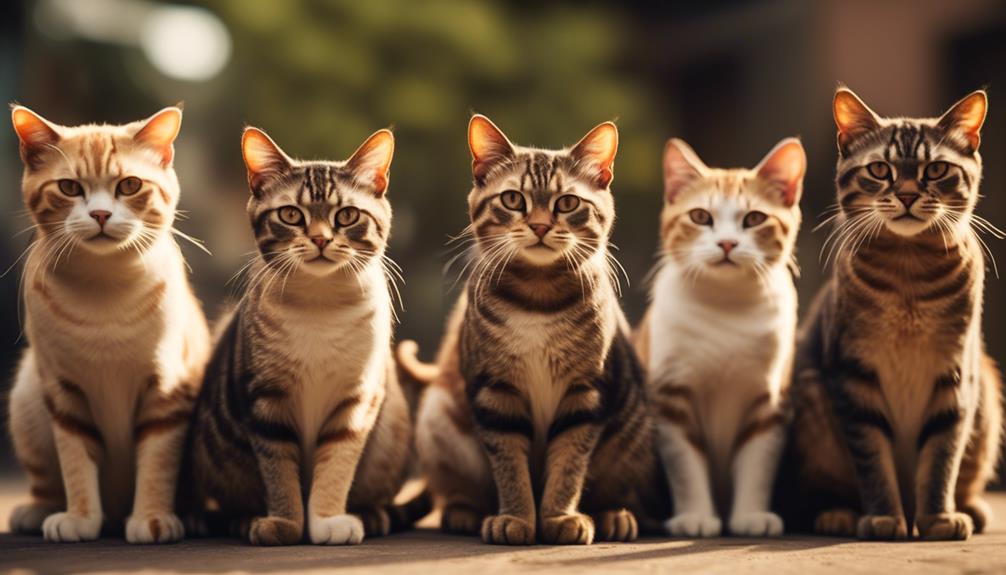
Originating from the Indonesian Raas Island, the Raas cat belongs to the domestic shorthair breed group and has an average lifespan of 12-15 years.
As a domestic shorthair breed group member, the Raas cat is known for its medium to large size and short, dense, and sleek coat.
The coat comes in various colors and patterns, including black, brown, tabby, and bi-colored.
Regarding temperament, the Raas cat is intelligent, playful, energetic, and strong-willed.
They are also independent but can become affectionate with their families once they feel comfortable.
With their high exercise needs, Raas cats require experienced owners and regular physical activity.
In terms of grooming, they only need weekly brushing to keep their coat healthy.
Coat Colors and Patterns
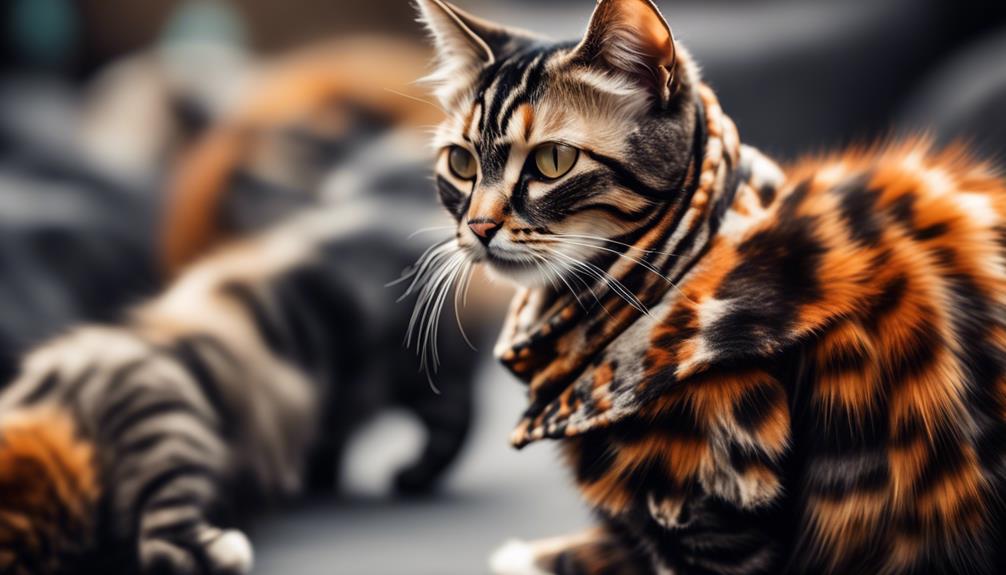
Raas cats exhibit a wide range of coat colors and patterns.
This includes black, brown, tabby, and bi-colored options.
The black coat color can range from solid black to black with white markings. Brown coats can vary from light to dark shades, often with tabby markings.
Tabby patterns can include classic, mackerel, and spotted patterns.
These patterns can have various combinations of colors. Bi-colored Raas cats have two distinct colors. One color is dominant, while patches of another color are present.
These cats can have a solid color on their torso and a different color on their face, legs, and tail.
The coat colors and patterns of Raas cats add to their unique and diverse appearance. This makes them visually appealing companions.
Temperament Traits
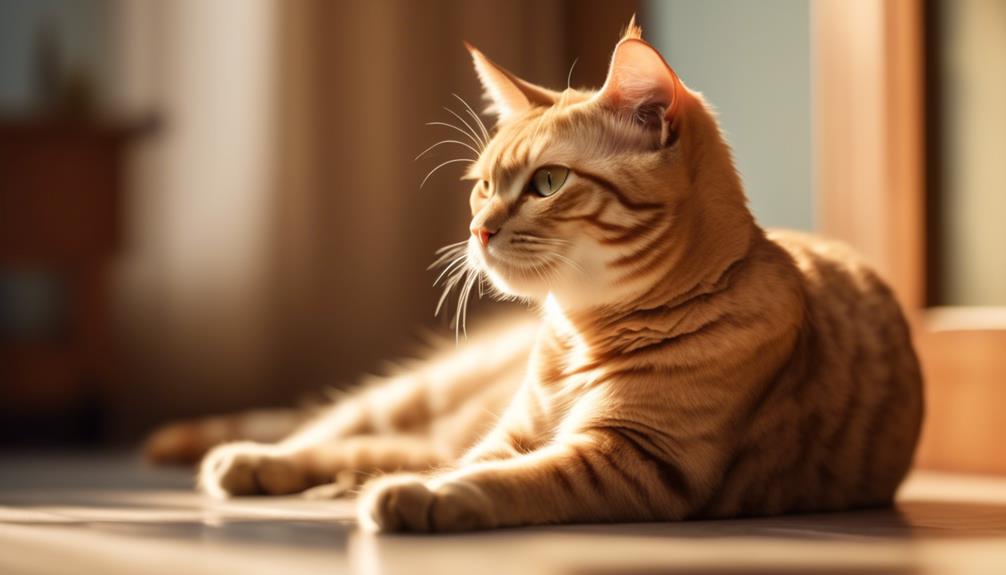
Known for their intelligence and independence, Raas cats exhibit unique temperament traits that make them captivating companions.
Here are four key characteristics that define their temperament:
- Intelligent: Raas cats are brilliant and possess excellent problem-solving skills. They can quickly learn new tricks and enjoy mentally stimulating activities.
- Playful: These cats are active and energetic, often engaging in games and interactive play sessions. Their playful nature makes them great companions for families and individuals alike.
- Strong-willed: Raas cats are known for their strong-willed personalities. They are determined and will assert their independence in decision-making and asserting their boundaries.
- Affectionate with family once comfortable: While initially reserved with strangers, Raas cats form strong bonds with their families. Once they feel comfortable, they display affection and enjoy spending quality time with their loved ones.
These temperament traits contribute to the overall charm and appeal of the Raas breed, making them a delightful addition to any household.
Exercise and Training Needs
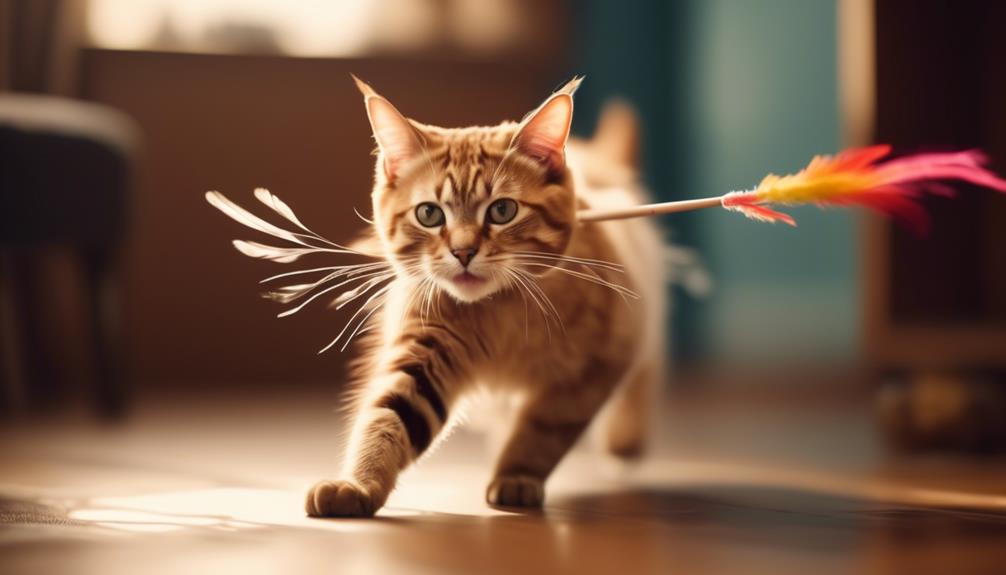
To ensure the physical and mental well-being of Raas cats, it is vital to provide them with adequate exercise and training.
These cats have high exercise needs and thrive in an environment that allows them to engage in regular physical activities.
Providing them opportunities to play, climb, and explore can help keep them physically fit and mentally stimulated.
Additionally, training Raas cats may require patience and experience due to their strong-willed and independent nature.
Consistency and positive reinforcement methods are recommended to train them effectively.
Establishing boundaries and providing mental challenges to prevent boredom and destructive behaviors is also essential.
Overall, Raas cats can lead happy and fulfilling lives by meeting their exercise and training needs.
Grooming Requirements
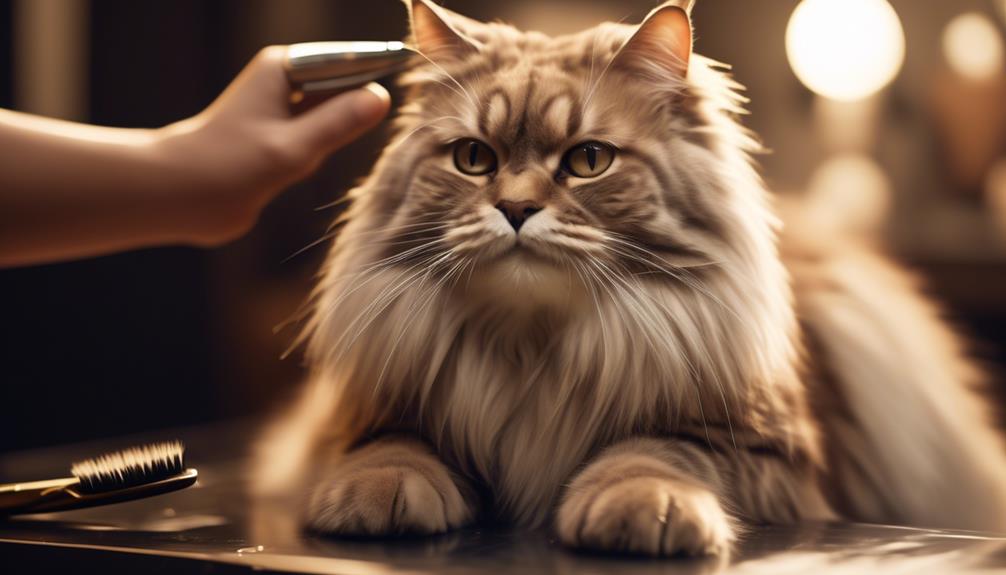
To maintain the overall health and appearance of Raas cats, it is essential to understand their grooming requirements.
Here are four key aspects to consider:
- Brushing: Raas cats have a short, dense, sleek coat that requires weekly brushing to remove loose hair and prevent matting. This grooming routine also helps to distribute natural oils and keep their coat healthy and shiny.
- Bathing: While Raas cats generally keep themselves clean, occasional baths may be necessary to remove dirt or odors. Use a gentle cat shampoo and ensure thorough rinsing to prevent skin irritation.
- Nail Care: Regularly trim your Raas cat’s nails to prevent them from becoming too long or sharp. This helps to avoid accidental scratches and keeps their paws in good condition.
- Ear and Teeth Maintenance: Check your cat’s ears for dirt or infection and clean them as needed. Additionally, establish a tooth brushing regime with guidance from your vet to promote good oral hygiene.
Unique Raas Cat Characteristics
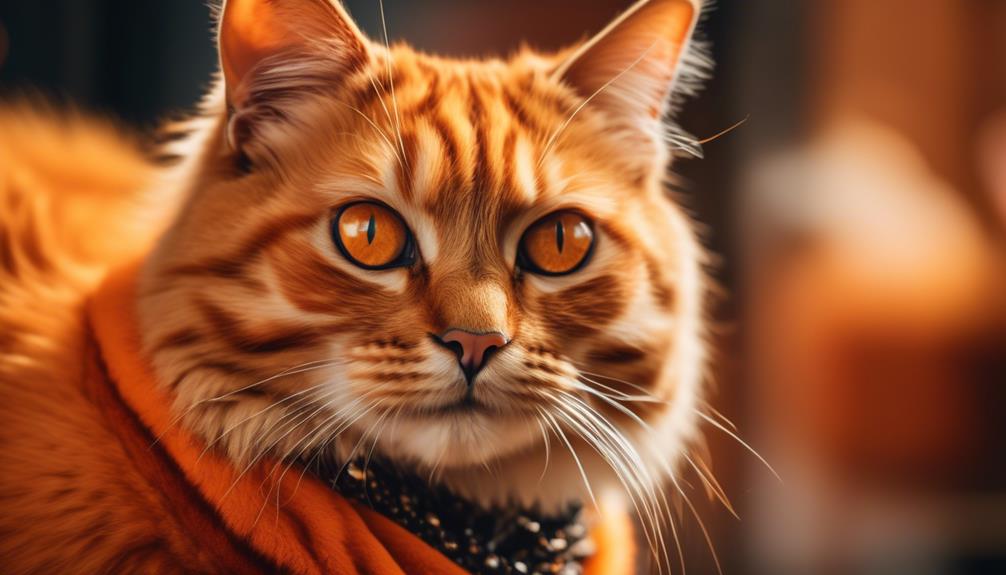
Raas cats possess distinctive traits that set them apart from other breeds, making them truly unique in their own right.
Here are some of their unique characteristics:
| Characteristic | Description |
|---|---|
| Bent Tail Tip | Raas cats commonly have a bent tail tip, a trait shared with other Asian breeds. This adds to their charm and uniqueness. |
| Blue and Cinnamon Coats | Some Raas cats have blue coats, Busok cats, while others have cinnamon-colored coats, known as Amethyst cats. These coat colors make them stand out among other cat breeds. |
| Myths and Legends | Raas cats are associated with myths and legends, such as the belief that bringing them off the Raas Island will bring bad luck. These stories add to their allure and intrigue. |
These unique traits make Raas cats a fascinating and captivating breed that cat enthusiasts will surely appreciate.
Compatibility With Other Animals
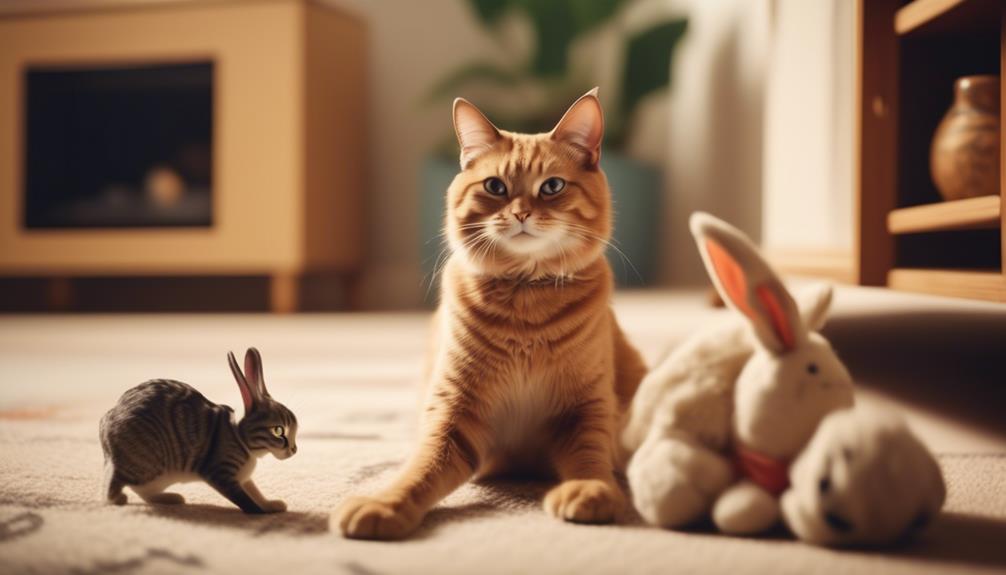
After exploring the unique characteristics of Raas cats, assessing their compatibility with other animals is essential.
Understanding how Raa cats interact with other pets in the household is crucial for a harmonious environment.
Here are four key points to consider:
- Friendliness: Raas cats have varying levels of friendliness towards other household animals. Some may be more accepting and tolerant, while others may be more territorial and less inclined to share their space.
- Prey Drive: Raas cats may view smaller domestic animals as prey due to their hunting instincts. It is important to supervise interactions with smaller pets and ensure their safety.
- Socialization: Early socialization and setting boundaries are essential, especially with young children. Proper introductions and gradual exposure can help establish positive relationships between Raas cats and other animals.
- Existing Pets: Raas cats may not be recommended for households with existing resident pets. It is crucial to consider the dynamics and temperaments of both animals before introducing a new pet into the family.
Health and Care Tips
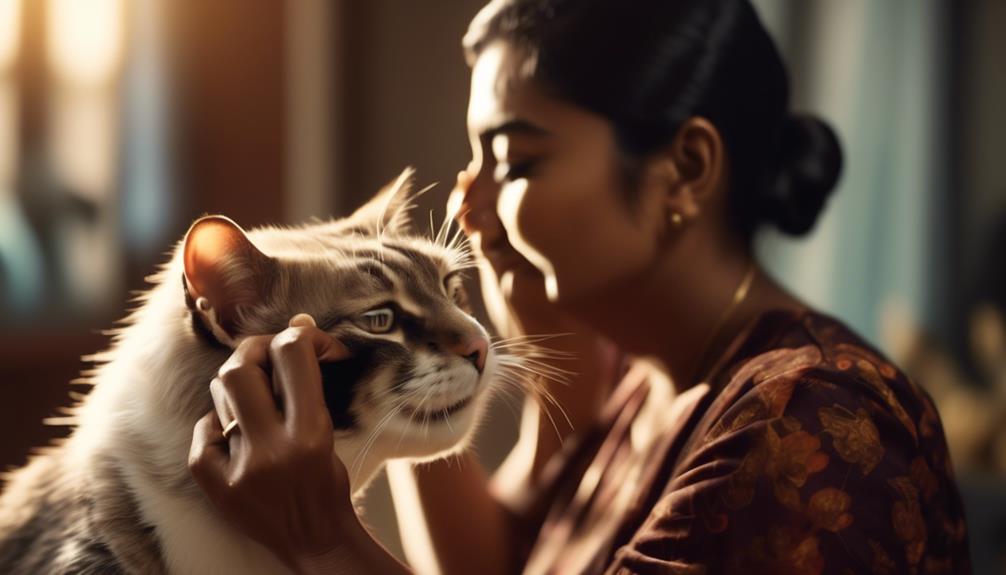
When caring for a Raas cat, it is essential to prioritize their health and provide proper care. Raas cats are generally considered healthy with no specific breed-related health problems.
However, regular wellness visits with a veterinarian are crucial to ensure their well-being.
Developing a care routine with the vet is recommended to address any potential health issues.
Providing a scratching post is also essential for healthy scratching and nail maintenance.
Regularly examining the cat’s ears for dirt or infection is necessary, and starting a teeth brushing regime with guidance from the vet can help maintain good oral hygiene.
As Raas cats are adaptable to different climates, it is essential to create a suitable environment for them.
Early socialization and setting boundaries are essential, especially with young children, as Raas cats may view smaller domestic animals as prey.
It is not recommended to have Raas cats in households with existing resident pets, and due to their rarity, finding them in shelters is unlikely.
However, keeping an eye out for potential rescues or adoption opportunities and contacting Purebred Cat Rescue organizations may provide options for adopting a Raas cat.
Regular Vet Visits
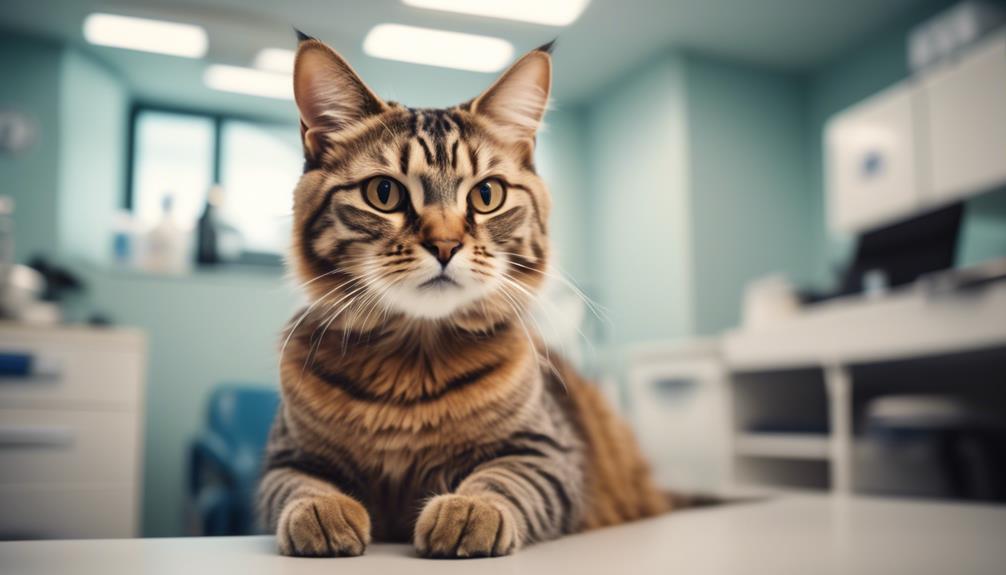
Regular veterinary visits are crucial for ensuring your Raas cat’s overall health and well-being.
Here are four reasons why regular vet visits are essential for your Raas cat:
- Preventive care: Regular check-ups allow the vet to detect any health issues early on, preventing them from worsening or becoming more difficult to treat. Vaccinations, parasite prevention, and dental cleanings are essential preventive care aspects.
- Monitoring health: Vets can monitor your Raas cat’s weight, heart rate, and overall condition during regular visits. This helps identify any changes or potential health concerns needing further investigation or treatment.
- Nutrition and diet: Your vet can guide the right type and amount of food for your Raas cat based on age, activity level, and health condition. They can also address any concerns regarding allergies or dietary restrictions.
- Professional advice: Regular vet visits allow one to ask questions and seek professional advice on behavior, grooming, and overall care. Vets can offer guidance on training techniques, recommended grooming practices, and resources for any additional support your Raas cat may need.
Dental and Ear Care
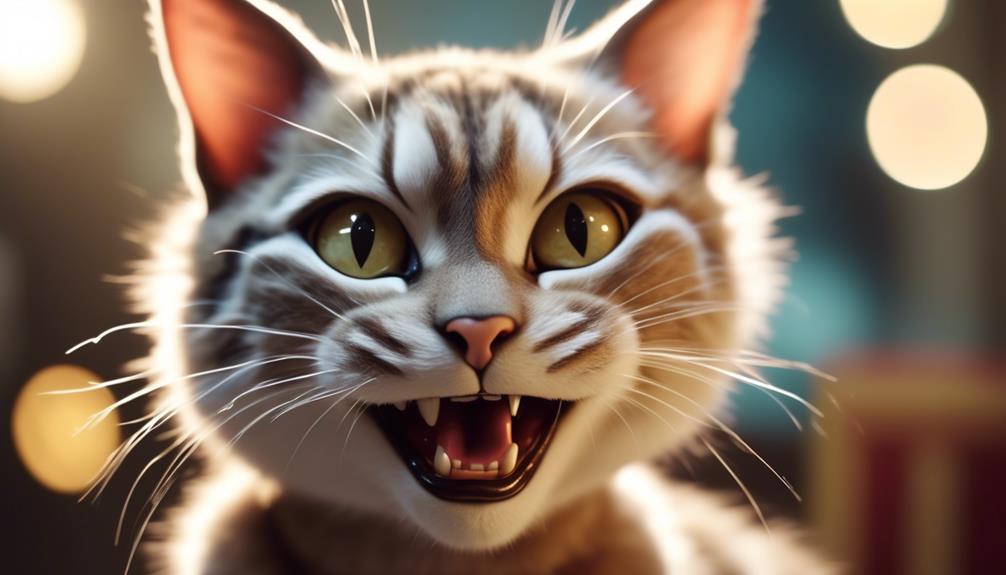
Proper dental and ear care is essential for maintaining the health and well-being of your Raas cat.
Regularly inspecting your cat’s ears for dirt or infection is necessary.
Clean the ears gently using a damp cloth or cotton ball, avoiding using cotton swabs.
Consult your veterinarian if you notice any redness, discharge, or unusual odor.
Additionally, developing a teeth brushing routine with guidance from your vet is crucial.
Brushing your cat’s teeth helps prevent dental issues such as tartar buildup and gum disease.
Use a toothbrush and toothpaste specifically designed for cats, and introduce the habit gradually to ensure your cat’s comfort.
Prioritizing dental and ear care will help keep your Raas cat healthy and happy.
Socialization and Boundaries
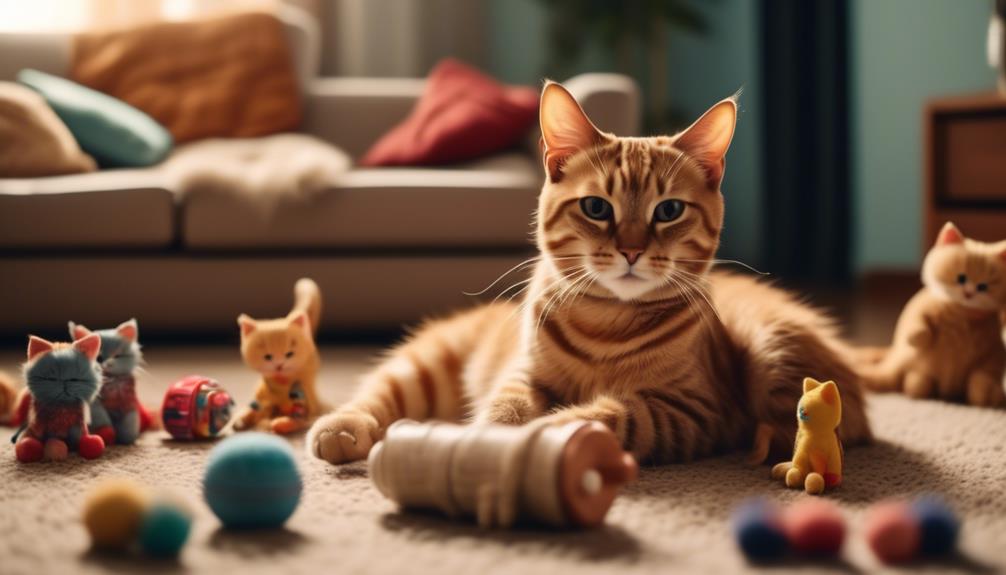
To ensure the well-rounded development of your Raas cat, it is essential to focus on socialization and setting boundaries.
Here are four key points to consider:
- Start early: Begin socializing your Raas cat from a young age to help them become comfortable and confident around people and other animals. Expose them to different environments, sounds, and experiences to prevent fear or anxiety later.
- Positive reinforcement: Use positive reinforcement techniques, such as treats and praise, to reward good behavior and encourage appropriate boundaries. This will help establish a strong bond with your cat and reinforce desirable behaviors.
- Consistency is vital: Establish consistent rules and boundaries in your home. This includes setting limits on where your cat is allowed, teaching them to use a scratching post instead of furniture, and training them to come when called. Consistency will help your Raas cat understand what is expected of them and promote good behavior.
- Respect personal space: Raas cats can be affectionate but value their space. Give them time alone and teach children or guests to respect their boundaries. This will prevent stress or aggression and foster a harmonious relationship with your cat.
Prey Drive and Resident Pets
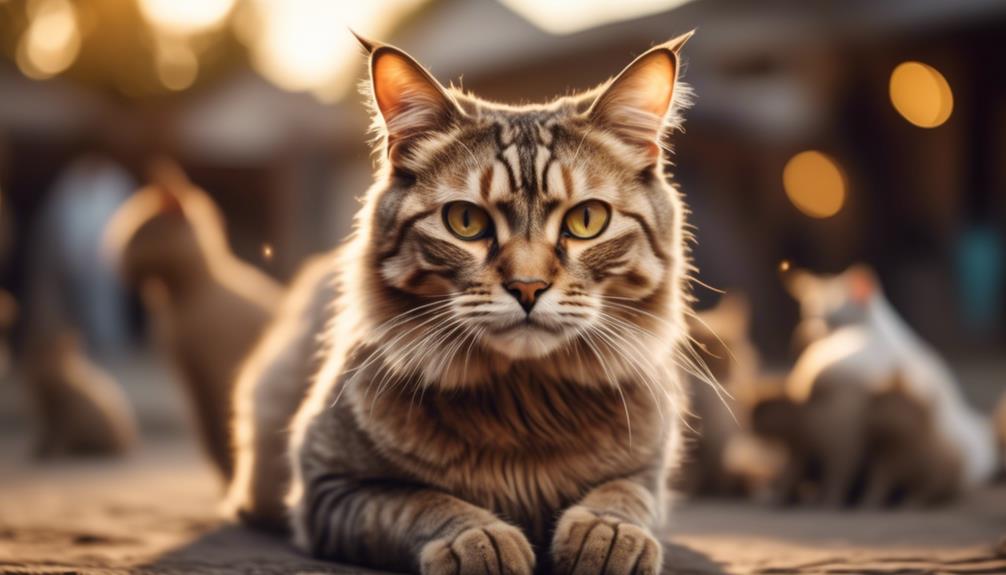
How does the prey drive of Raas cats affect their compatibility with resident pets?
Raas cats have an instinct for hunting and a strong prey drive, which can affect their compatibility with resident pets.
Due to their hunting instincts, they may view smaller domestic animals, such as birds or rodents, as prey.
This can pose a challenge when introducing them to other pets in the household, particularly smaller animals like rabbits or guinea pigs. While each cat’s prey drive may vary, it is generally not recommended to have Raas cats in households with existing resident pets, especially those of smaller size.
It is crucial to consider the prey drive of Raas cats and carefully assess their compatibility with other animals before introducing them into a multi-pet household.
| Pros | Cons |
|---|---|
| Energetic and playful | Strong prey drive toward smaller animals |
| Affectionate with family | It may not be compatible with smaller resident pets |
| Intelligent and independent | Potential for conflicts and aggression towards other animals |
Adoption Considerations
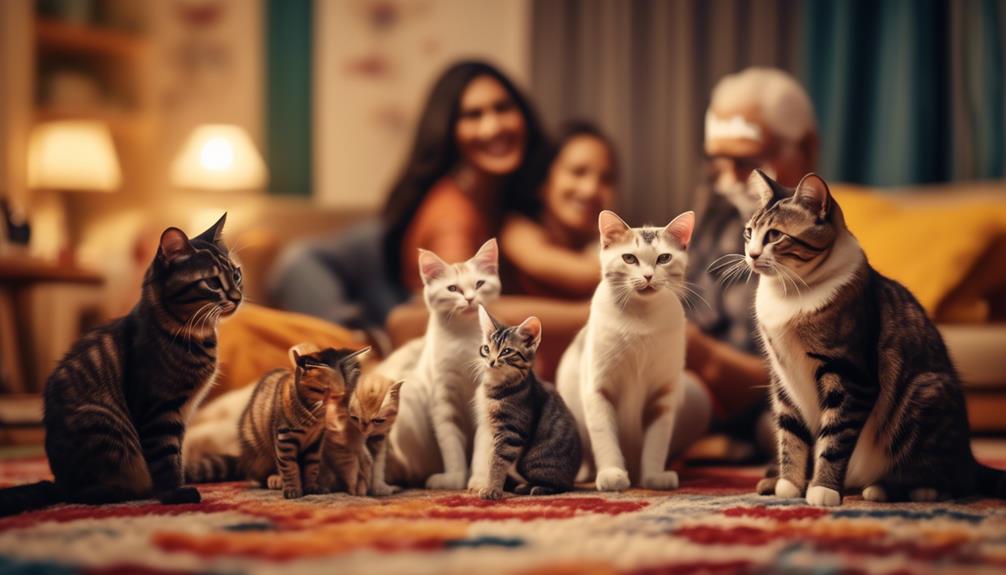
Given the potential challenges presented by the prey drive of Raas cats, careful considerations must be made before proceeding with the adoption process.
Here are some essential factors to keep in mind:
- Experienced owners: Raas cats require experienced owners who understand their independent nature and can provide guidance and boundaries.
- Compatibility with other pets: Due to their strong prey drive, Raas cats may not be suitable for households with resident pets and significantly smaller domestic animals.
- Early socialization: Early socialization is crucial to ensure that the cat develops appropriate behavior and boundaries, especially with young children.
- Adoption opportunities: Due to their rarity, finding a Raas cat in a shelter may be unlikely. However, watch for potential rescues or consider contacting Purebred Cat Rescue organizations for adoption opportunities.
Rescue Organizations and Opportunities
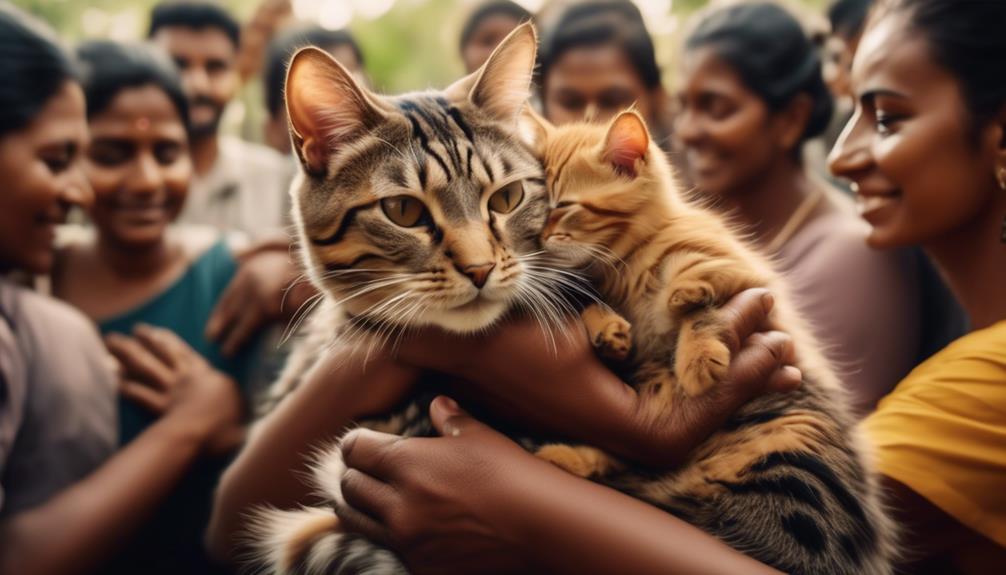
Rescue organizations and opportunities provide potential avenues for finding and adopting Raas cats despite their rarity in shelters.
Due to their limited presence in shelters, finding a Raas cat available for adoption can be challenging.
However, there are still opportunities to rescue or adopt a Raas cat through other means.
One option is to contact Purebred Cat Rescue organizations, as they may have information about Raas cats needing a home.
These organizations specialize in rescuing and rehoming specific breeds, including rare ones like the Raas cat.
Additionally, keeping an eye out for potential rescues or adoption opportunities through online platforms and local communities may increase the chances of finding a Raas cat needing a loving home.
Frequently Asked Questions
Are Raas Cats Hypoallergenic?
Raas cats are not considered hypoallergenic.
While individual reactions may vary, the breed’s short, dense coat can still produce allergens.
Allergic individuals should consult a medical professional before considering a Raas cat as a pet.
How Much Do Raas Cats Typically Weigh?
Raas cats typically weigh between 8 to 15 pounds. However, it is essential to note that individual cat weights can vary within this range.
Regular weight monitoring and consultation with a veterinarian are recommended for optimal health and well-being.
Do Raas Cats Have Any Special Dietary Requirements?
Raas cats do not have any special dietary requirements. However, it is essential to provide them with a balanced diet that meets their nutritional needs.
Consult with a veterinarian for personalized dietary recommendations for your Raas cat.
Can Raas Cats Be Trained to Walk on a Leash?
Yes, Raa cats can be trained to walk on a leash.
However, their independent nature may require more patience and time compared to other breeds.
Consistent training and positive reinforcement, starting at a young age, can increase the chances of success.
Are Raas Cats Prone to Any Specific Behavioral Issues?
Raas cats do not have any specific behavioral issues associated with the breed.
However, like any cat, individual personalities may vary. Early socialization and setting boundaries are essential for a well-behaved Raas cat.
Conclusion
In conclusion, Raas cats are a unique and captivating breed from Indonesia’s Island.
They are known for their medium to large sizes, sleek coats, and various colors and patterns.
With their intelligent and independent nature, Raas cats make lovely companions for experienced cat owners. Understanding their exercise, training, and socialization needs is critical to providing them a happy and fulfilling life.
Consider adopting a Raas cat and experience the joy they bring to your home.




